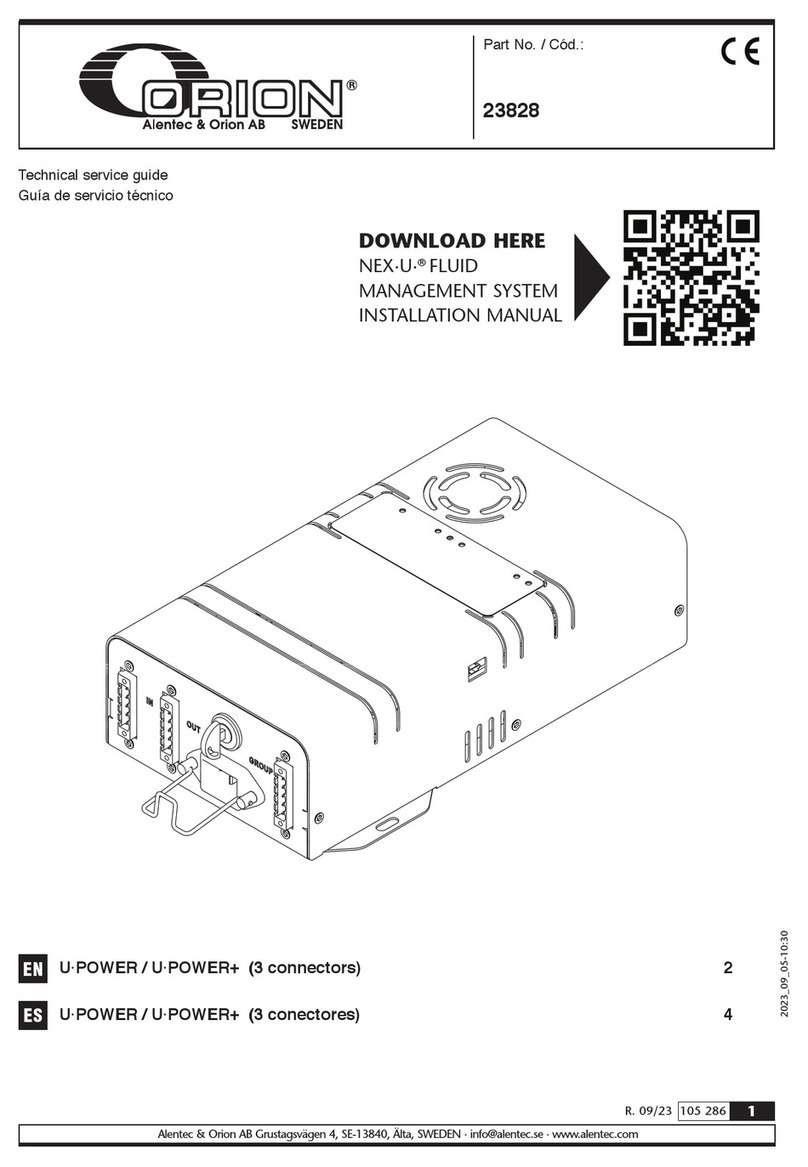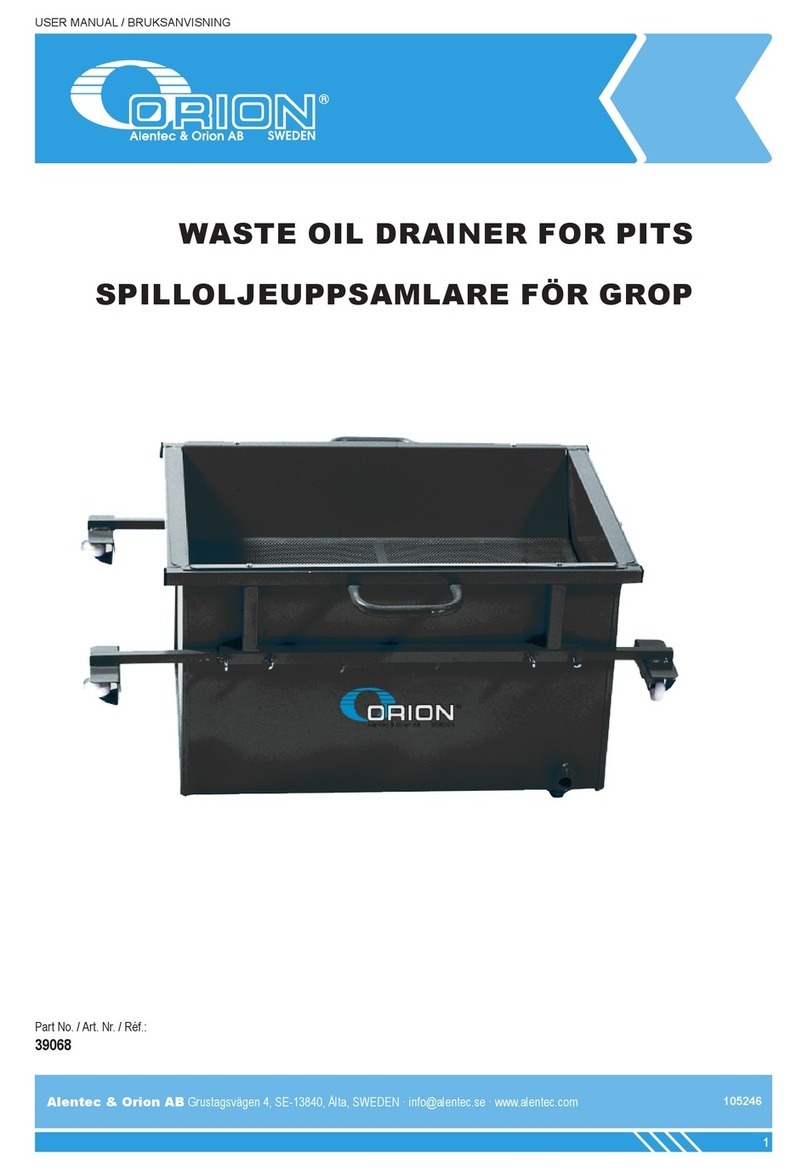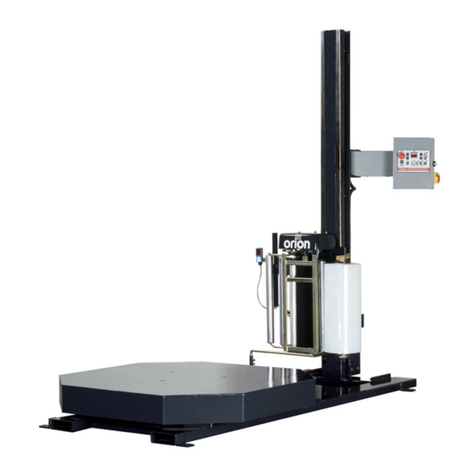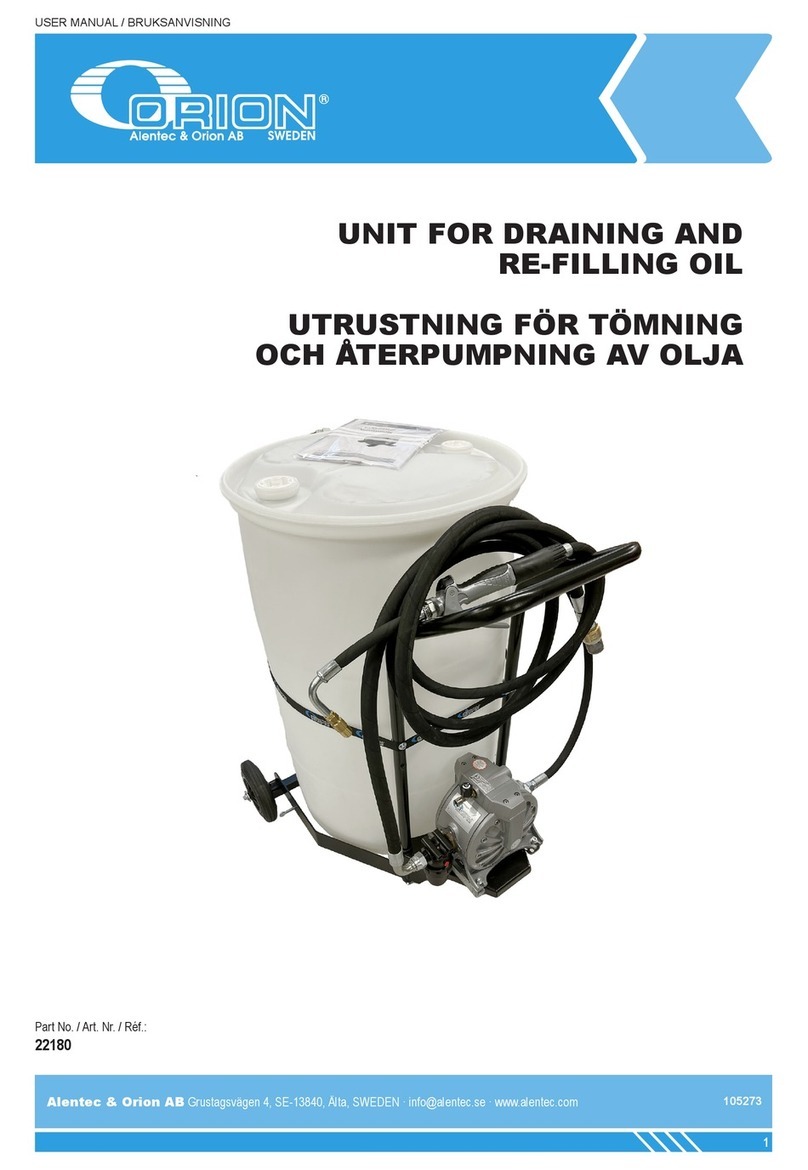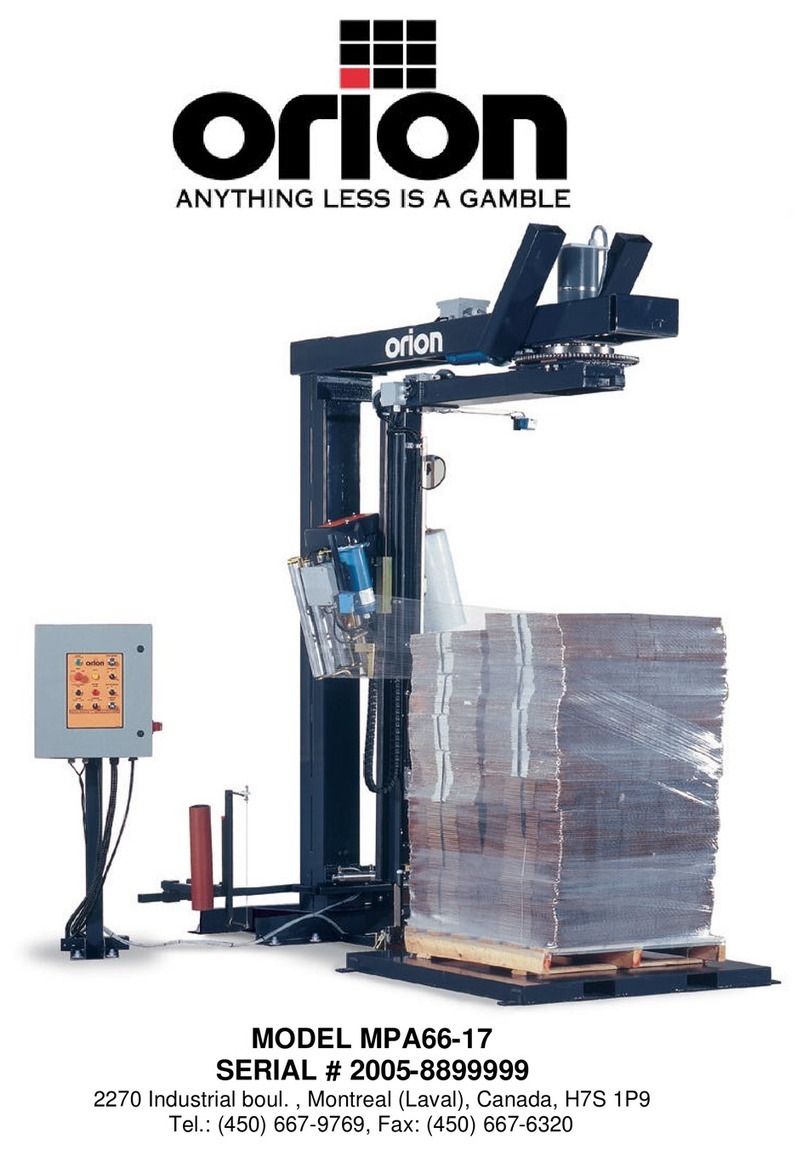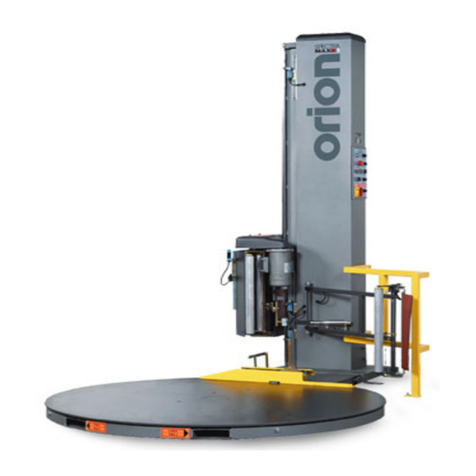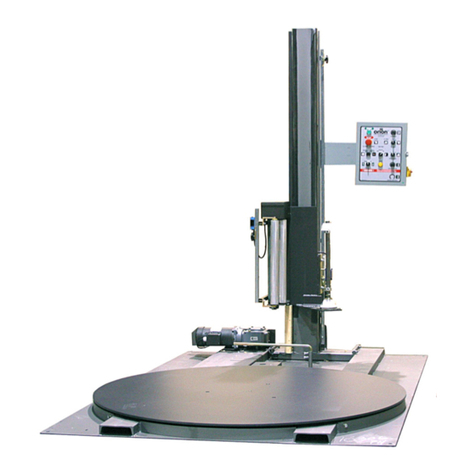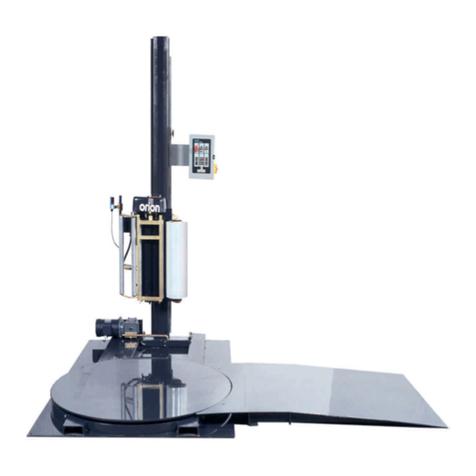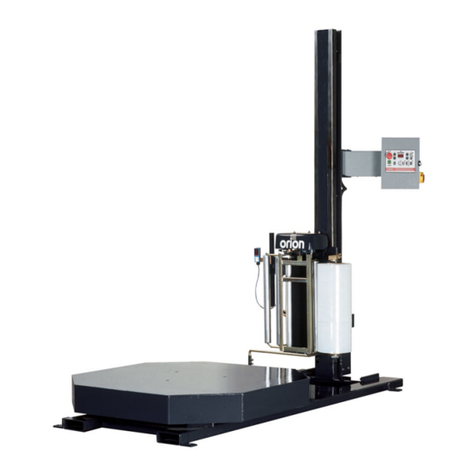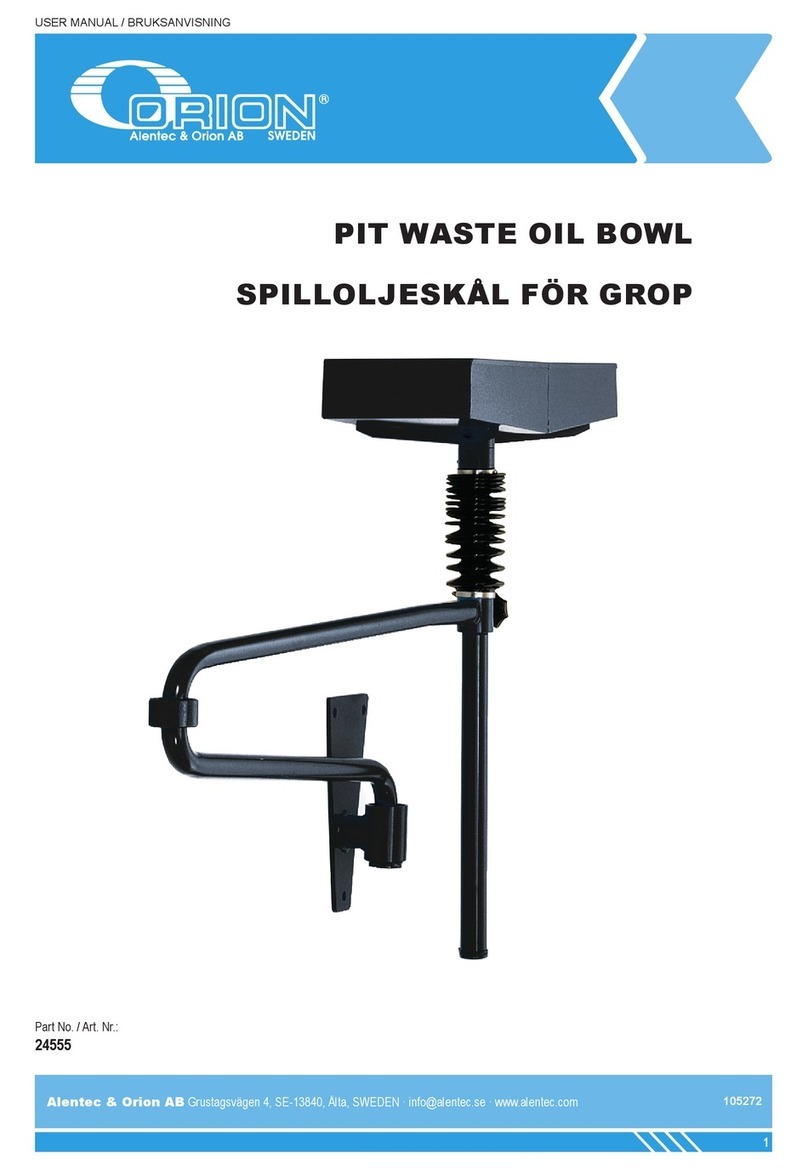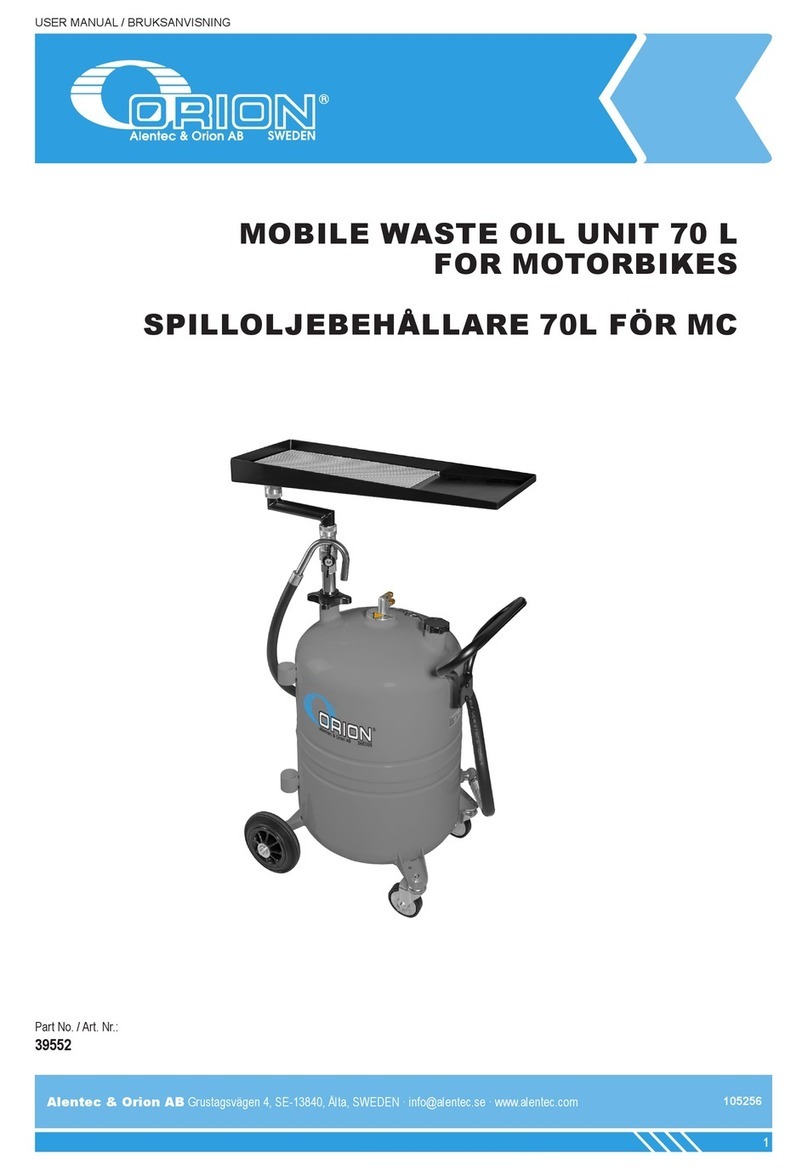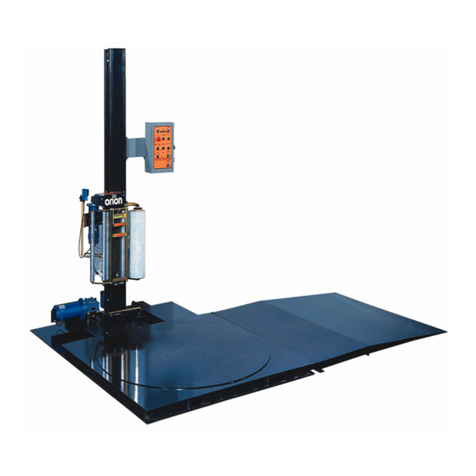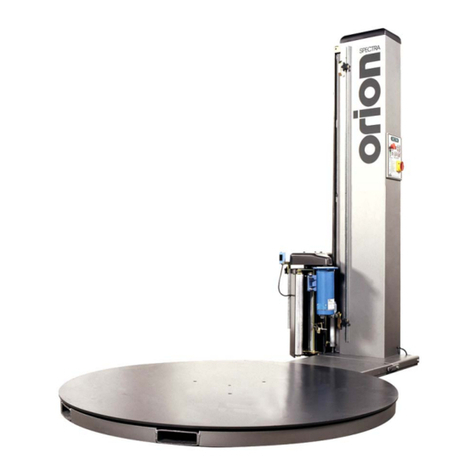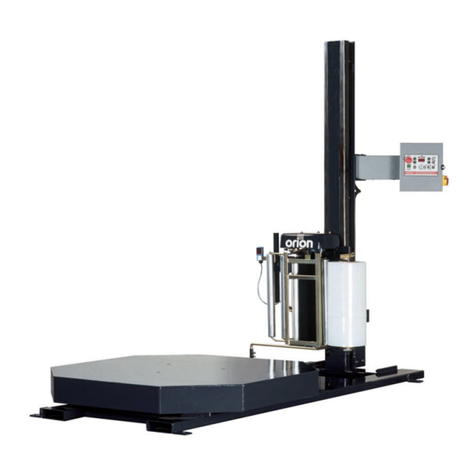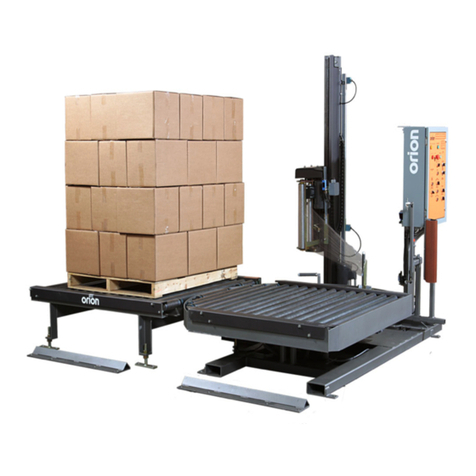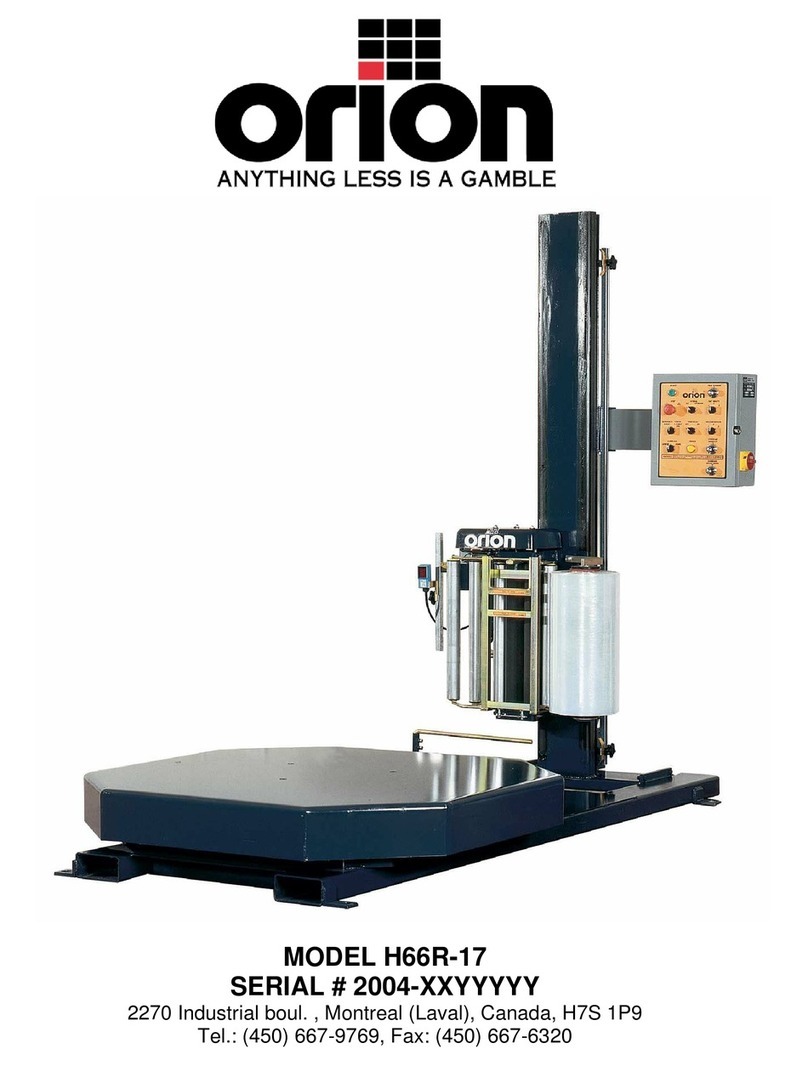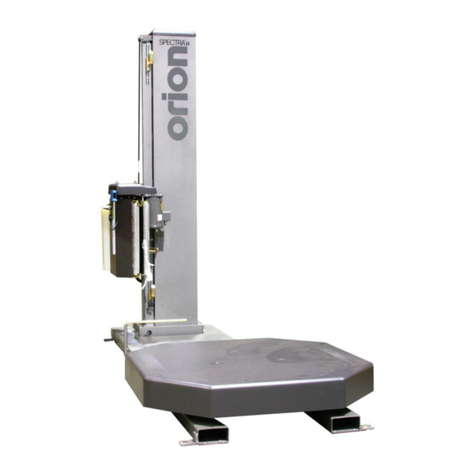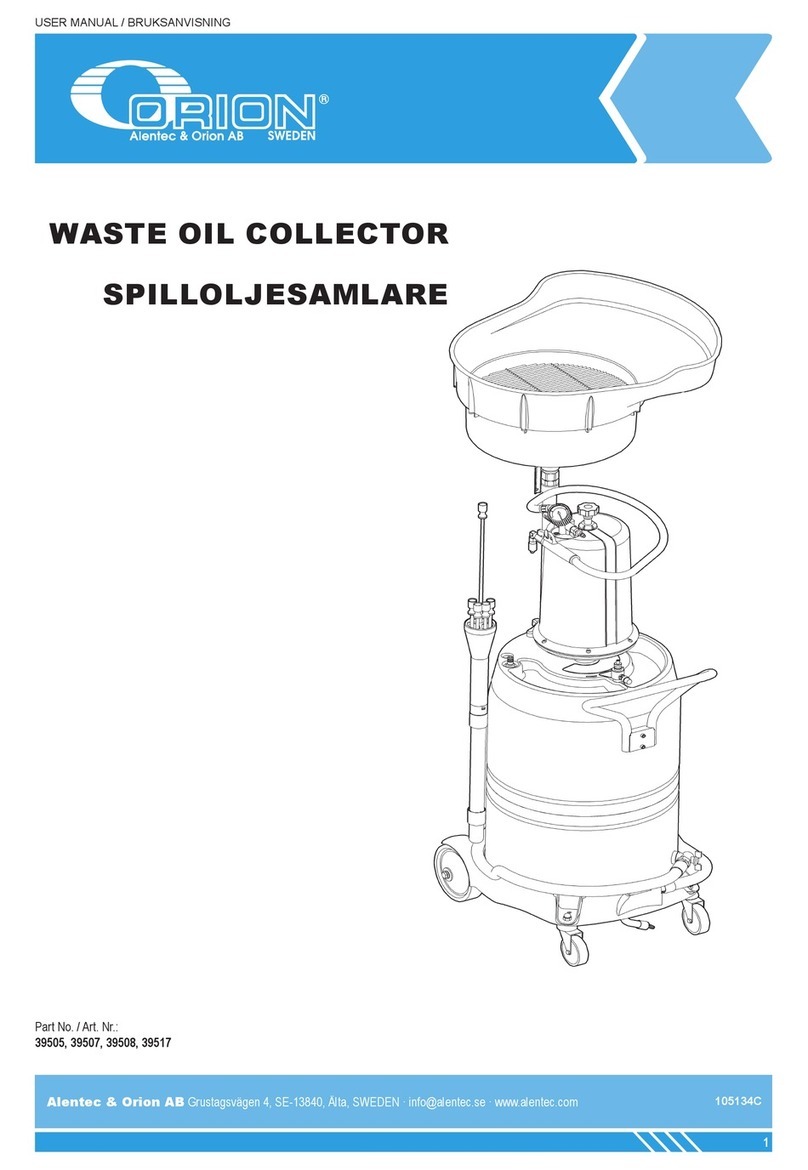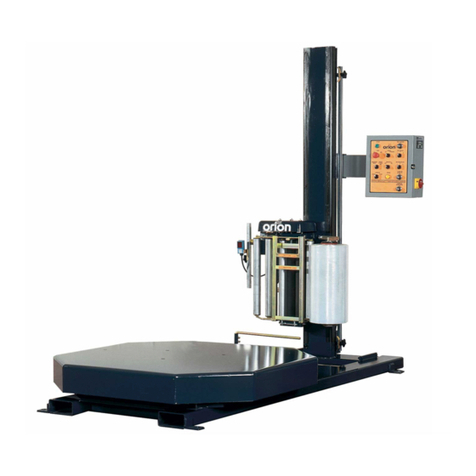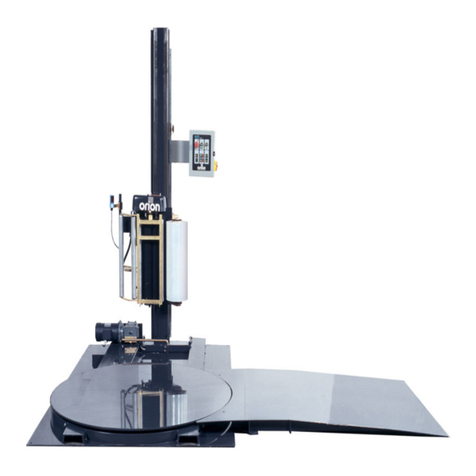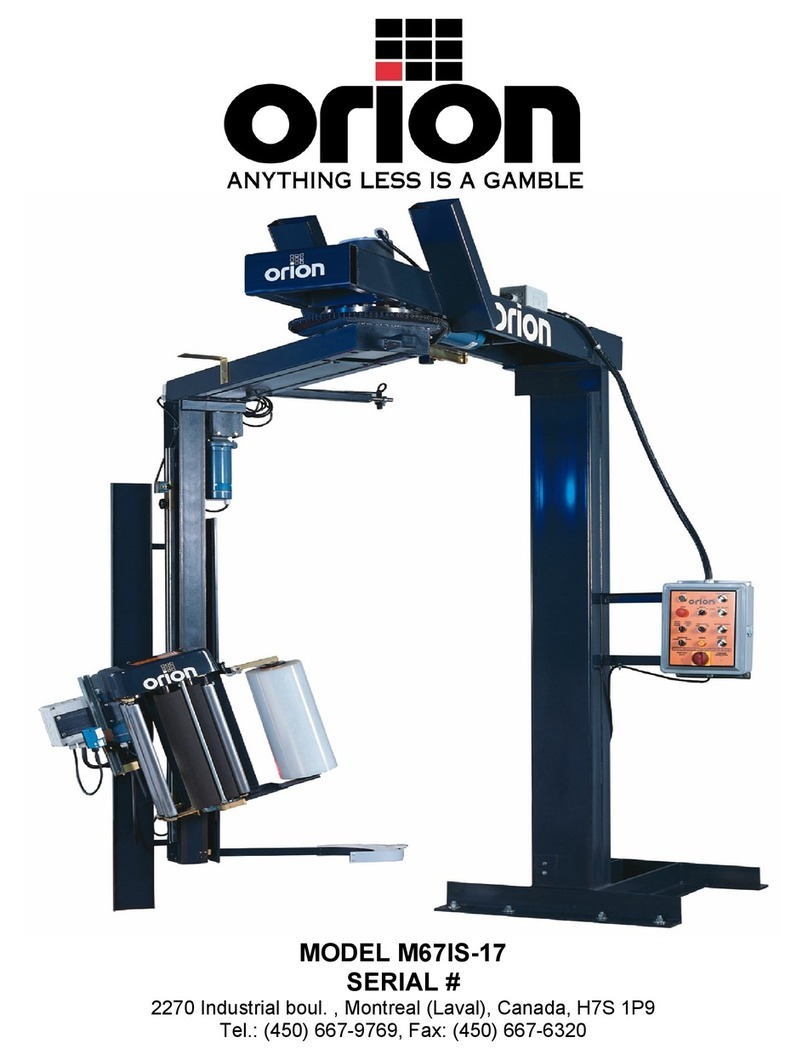
5
MACHINE UNLOADING
INSPECTION & INSTALLATION
UNLOADING
Machine can be easily unloaded and transported by a
forklift with a minimum capacity of 2500 lbs.
1. Carefully insert the forks into the lifting tubes to the
maximum possible depth. Depending on the model, a
forklift access may be either at the turntable end of the
machine frame, the tower end or both. In case of the
mongoose machine enter the forks under the frame or
insert the forks in the tube brackets welded to the top of
the machine.
2. Lift the machine (or other part of system) only to the
necessary height to move it with no bouncing or friction on
the floor.
3. Sit the machine down assuring uniform contact with the
floor, which is necessary to ensure correct and smooth
operation.
INSPECTION
1. Remove all packing and supporting additions - these
may include the blocks under the carriage and the
restraining bar over the table.
NOTE: when removing the stretchwrap film covering the
machine, care must be taken not to cut any of the
electrical wires and/ or polyurethane covering on the film
carriage rollers.
2. Perform a visual inspection of the electrical and
mechanical parts for loosened joints and / or broken
connections. Any suspected shipping damage must be
reported immediately to the freight carrier. Any transport
damage cannot be claimed to Orion Packaging Inc.
Items that are vulnerable to damage and must be
inspected are as follows:
- Motors and transmissions
- Junction boxes
- Electrical conduits
- Proximity and limit switches
- Photocells
3. Check under the turntable to ensure that there is no
crippling of the movable parts i.e. casters, center axle or
drive assembly.
4.Verify the following:
- Turntable or rotary arm drive system to confirm that the
reducer to drive the chain is snug and properly aligned.
- Verify the wires tight conduits for crushed sections or
loose fittings.
- Verify the film carriage to be sure that it is correctly
aligned with the tower
- Verify the tension on the lift chain.
- Verify all the dials and knobs on the control panel for
smooth action.
MACHINE INSTALLATION
After the visual inspection has been completed, the
electrical power and the compressed air shall be
connected as specified on the diagrams supplied with the
machine. An electrical diagram is provided with each
machine in the envelope attached to the panel box.
ASSEMBLY PROCEDURE
The structural frames of the machine have to be installed
on a leveled floor. Locate the main wrapper section into its
final position, keeping the tower assembly* away from any
traffic. The wrapper mainframe section must be bolted to
the floor by the 1/2” concrete floor anchors (leg &
shield or expandable type).
Any wiring that has been disconnected to facilitate
transport is marked with a number located on the junction
box to which the wiring must be reconnected. Any wire run
that appears too short or long may indicate that the
position of the mechanical components is incorrect. Verify
the status of all assemblies before proceeding.
* The tower deviation from vertical must not exceed 1/4”
on the distance of 10 feet (angle: 0 degrees 6’).
CONTROL PANEL
In the case of the free standing panel (console) place it
adjacent to the system and anchor firmly to the floor.
Connect the liquid tight (rigid conduit) to the main junction
box located on the wrapper main frame next to the tower.
Before Starting Machine Operation
Verify that the machine is properly connected to the
electrical source. The electrical requirements depend on
the machine type and features. For this information,
please see the machine electrical diagram provided with
the machine operation manual. The control panel layout
for the machine is shown on the drawing.
CAUTION: Before preceding the machine operation
familiarize yourself with the EMERGENCY-STOP button
and all functions, switches and pushbuttons.
